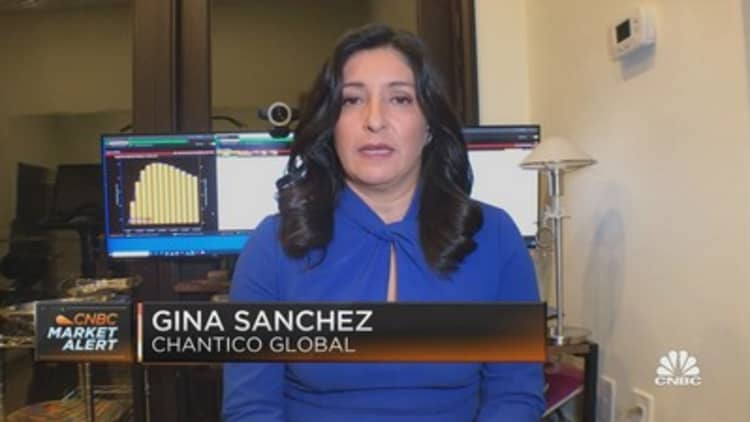Wall Street finally looks to be embracing the idea that the Federal Reserve will hike rates into restrictive territory and stay at that high rate for a substantial period. That is, the Fed will hike and hold, not hike and cut as many in the markets had been forecasting.
The September CNBC Fed Survey shows the average respondent believes the Fed will hike 0.75 percentage point, or 75 basis points, at Wednesday’s meeting, bringing the federal funds rate to 3.1%. The central bank is forecast to keep hiking until the rate peaks in March 2023 at 4.26%.
The new peak rate forecast represents a 43 basis point increase from the July survey.
Fed funds expectations
CNBC
Respondents on average forecast the Fed will remain at that peak rate for nearly 11 months, reflecting a range of view of those who say the Fed will maintain its peak rate for as little as three months to those who say it will hold there for up to two years.
“The Fed has finally realized the seriousness of the inflation problem and has pivoted to messaging a positive real policy rate for an extended period of time,” John Ryding, chief economic advisor at Brean Capital, wrote in response to the survey.
Ryding sees a potential need for the Fed to hike as high as 5%, from the current range of 2.25%-2.5%.
US Federal Reserve Chairman Jerome Powell gives a press briefing after the surprise announcement the FED will cut interest rates on March 3, 2020 in Washington, DC.
Eric Baradat | AFP | Getty Images
At the same time, there is growing concern among the 35 respondents, including economists, fund managers and strategists, that the Fed will overdo its tightening and cause a recession.
“I’m fearing they are on the cusp of going overboard with the aggressiveness of their tightening, both in terms of the size of the hikes along with (quantitative tightening) and the speed at which they are doing so,” Peter Boockvar, chief investment officer of Bleakley Financial Group, wrote in response to the survey.
Boockvar had been among those who had urged the Fed to pivot and tighten policy very early on, a delay that many say has created the need for officials to move quickly now.
Respondents put the recession probability in the U.S. over the next 12 months at 52%, little changed from the July survey. That compares with a 72% probability for Europe.

In the U.S., 57% believe the Fed will tighten too much and cause a recession, while just 26% say it will tighten just enough and cause only a modest slowdown, a 5-point drop from July.
Jim Paulsen, chief investment strategist at The Leuthold Group, is among the few optimists.
He says the Fed “has a real chance at a soft-landing” because the lagged effects of its tightening to date will reduce inflation. But that’s provided it doesn’t hike too far.

“All the Fed has to do to enjoy a soft landing is stand down after raising the funds rate to 3.25%, allow real GDP growth to remain positive, and take all the credit as inflation declines while real growth persists,” Paulsen wrote.
The bigger problem, however, is that most respondents do not see the Fed succeeding at hitting its 2% inflation target for several years.
Respondents forecast the consumer price index will end the year at a 6.8% year-over-year rate, down from the current level of 8.3%, and fall further to 3.6% in 2023.
Only in 2024 does a majority forecast the Fed will hit its target.
Elsewhere in the survey, more than 80% of respondents said they made no change to their inflation forecasts for this year or next as a result of the Inflation Reduction Act.
In the meantime, stocks look to be in a very difficult spot.
Respondents marked down their average 2022 outlook for the S&P 500 for the sixth straight survey. They now see the large-cap index ending the year at 3,953, or about 1.4% above Monday’s close. The index is expected to rise to 4,310 by the end of 2023.
At the same time, most believe markets are more reasonably priced than they were during most of the Covid pandemic.
About half say stock prices are too high relative to the outlook for earnings and the economy, and half say they are too low or just about right.
During the pandemic, at least 70% of respondents said stock prices were too high in nearly every survey.
The CNBC risk/reward ratio — which gauges the probability of a 10% upside minus downside correction in the next six months — is closer to the neutral zone at -5. It has been -9 to -14 for most of the past year.
The U.S. economy is seen running at stall speed this year and next with just 0.5% growth forecast in 2022 and little improvement expected for 2023 where the average GDP forecast is just 1.1%.
That means at least two years of below trend growth is now the most likely case.
Mark Zandi, chief economist at Moody’s Analytics wrote, “There are many potential scenarios for the economic outlook, but under any scenario the economy will struggle over the next 12-18 months.”
The unemployment rate, now at 3.7, is seen rising to 4.4% next year. While still low by historical standards, it is rare for the unemployment rate to rise by 1 percentage point outside of a recession. Most economists said the U.S. is not in a recession now.



